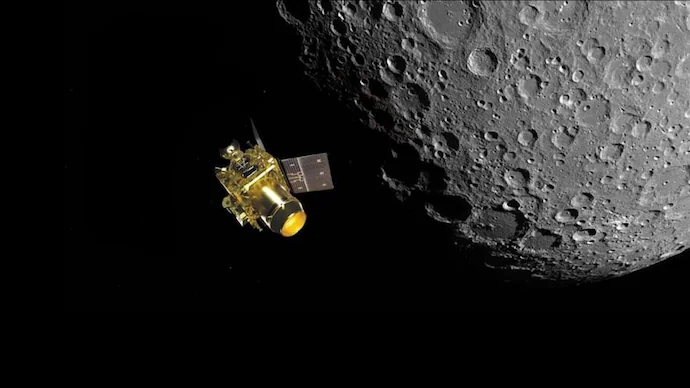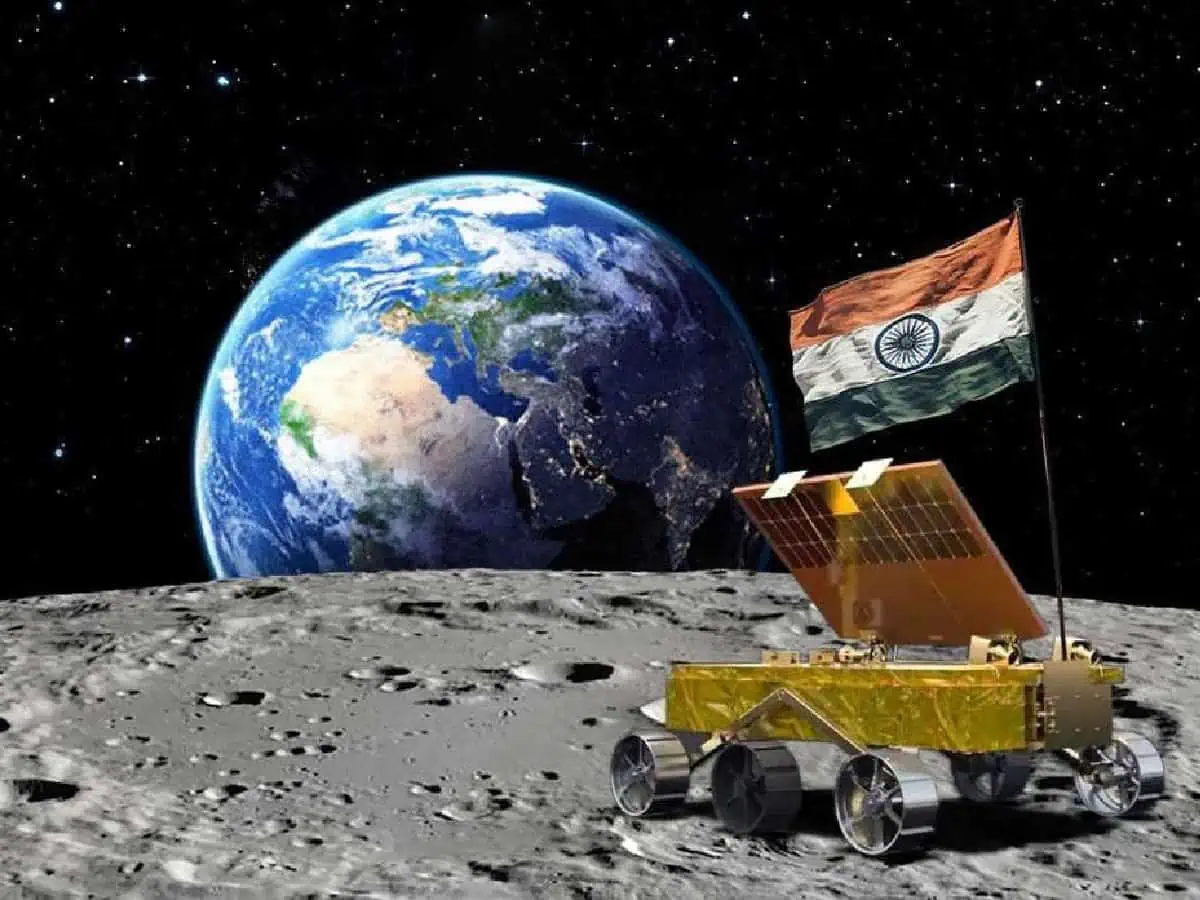India’s Chandrayaan-3, the first of its type trip to the south pole of the moon, did not awaken. The moon day, which is equal to 14 Earth days, did not cause the Vikram lander or Pragyan rover on Chandryaan-3 to awaken. The Chandrayaan-3 was built to last 14 days on Earth or one lunar day. On August 23, the Chandrayaan-3 made a close approach to the Moon’s south pole.
On the moon, what happened to Chandrayaan-3?

The day was September 30, the Sun’s illumination of the lunar surface started to fade. When a new day dawned, scientists from the Indian Space Research Organisation (ISRO) had hoped to be able to resuscitate Chandrayaan-3’s lander and rover.
On September 2, the Pragyan rover had been placed to sleep, and on September 4, the lander. The rover successfully fulfilled its tasks, according to ISRO. It is currently securely parked and in sleep mode. Payloads LIBS and APXS are disabled. The battery is completely charged right now. The solar panel is set up to catch the light on September 22, 2023, when the next dawn is anticipated. The receiver remains on.
Pragyan’s batteries were reportedly completely charged, and the receiver continued to operate. When morning arrived on the moon, the solar panels were positioned to catch the rays. But despite several attempts, neither the lander nor the rover awoke. Chandrayaan-3 did not transmit any signal. On September 20, the sun rose over the moon once more. The optimal window for the Vikram lander and Pragyan rover to recover would have been the first three days, or up until September 22.
What did the Chandrayaan-3 Experts Say?
According to ISRO Chairman S. Somnath, the space agency would wait until the final day on Earth for the lander and rover to awaken. It would provide a chance to conduct more tests on the lunar surface. Vikram and Pragyan, however, remained silent. On September 2, the rover went into sleep mode, and on September 4, the lander. With Pragyan’s batteries completely charged, the receiver continued to operate. When morning arrived on the moon, the solar panels were positioned to catch the rays.
It is believed that the intense temperatures of the Moon had an impact on the Pragyan Rover’s batteries. The moon’s poles may reach temperatures as low as minus 180 to minus 253 degrees Celsius, according to prior data. Additionally, there was complete darkness on the moon, which rendered Chandrayaan-3‘s solar panels ineffective. According to a report on Space.com, the lander and rover are not equipped with heaters, which are frequently utilized on moon missions.
Is it possible to restore the lander and rover?

While the ISRO hasn’t given up, statistical evidence indicates that Chandrayaan-3’s prospects of survival are slim.
Will Chandrayaan-3 remain on the Moon indefinitely?
If the Pragyan and Vikram team of Chandrayaan-3 do not awaken, according to past ISRO statements, “it will forever stay there as India’s lunar ambassador.” Pragyan and Vikram were not intended to come back to Earth.












Be First to Comment